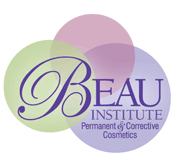When to Correct a Color Residual and When NOT
to!
I have wanted to share my opinions regarding
discolored eyebrows for some time. I am basing these opinions on my more than
25 years of experience, using many different pigment companies and analyzing
how they heal in the skin.
We receive calls almost daily with questions
regarding residuals left from previous procedures. What does one do with this
stain or leftover color?
I first want to say that permanent makeup
pigment colors, after several years, will leave some stain or residual. A great
metaphor I use is, imagine you colored your hair just once, one single
time. It would first begin to fade and then the color would continue to
change over time until it no longer resembled the original color that was used.
It would be unrecognizable and this process is called oxidation. The base color
of the hair dye, your climate, your lifestyle and your hair products will
affect how this one-time hair color faded and also how it would oxidize.
Permanent Makeup colors
will eventually behave in this same manner after years, if not touched up.
There will be some residual color remaining that may not even resemble the
original color that was tattooed.
There are some residuals that are of concern and
some that are not. The residuals that hold no concern for me are: shades of red, orange, coral
and pink. In other words, warm residuals.
I do not see these residuals as an issue. I
either utilize the warm residual or simply do a cover-up with a taupe shade. I
utilize it by adding a taupe shade of hair strokes and allow the warmth to
remain in between them. This technique heals out beautifully. If it is a powder
brow, I may not add warmth to my selection. This would depend on the amount of
warmth I am working over and if there is enough residual to warm my pigment
selection.
If we receive a call from a client, regardless
of where she had her procedure done and she says her brows are turning orangey,
we just tell her it’s time for a color touch-up. We do not make a big deal out
of this since it is anything but a big deal!
We are often asked by practitioners if our Face
Inks pigments heal red. If you choose a warm base that is too warm, this will
occur with any and all pigments.
Light gray residuals can often be ignored, as
well, if you are tattooing a darker color than the light gray residual over it.
The more difficult residuals are the darker
gray, darker blue, blackish tones and purple. These are not a cover-up. I
consider these a color correction and they generally take a minimum of 2
visits. I make no commitment of how many return visits will be required
with these types of corrections, although it is rarely more than 2.
Face Inks Goldfinch is a fabulous purple
corrector. I will often add some Milk Chocolate to it, since it has a golden
brown base.
For the darker grays and blues, I use Henna and
Butterscotch.
Turquoise and shades of
green simply need red. Adding Henna or
Cocoa to your selected brown will help stamp this out. However, if migration
has occurred, it may require a salt removal in addition to the color correction.
For correcting color, I always use a 5-round and
do not travel nearly as deeply in the skin as I would a regular procedure. My
goal and my visual is to place the color on top of the color to be corrected
and not place it as deeply as it was initially placed.
We must keep in mind there are many factors that
affect how a pigment color wears or fades in the skin. What is their overall
complexion? Some very fair people can heal on the cool side while some hold
onto the warmth in a color. Ruddy complexions can heal with cool tones, as
well, since the pink or redness translates and adds blue to the healed color.
Where are they on the Fitzpatrick Scale?
The more color in the skin, the more blue. Deeper skin tones and higher on the
Fitzpatrick Scale can tend to heal cool if some warmth is not added to balance
the blue in these higher numbers.
What is their skin undertone? The undertone of
the skin also affects how color will heal over the years. Warmer undertones
often hold onto the warmth in a brow shade while olive tones can eventually
oxidize with a cooler tone.
What is their lifestyle and where do they live?
Those that spend a great deal of time outdoors will fade more quickly and you
will see your pigment residual sooner than those that do not spend time
outdoors. Warmer or tropical climates will often tend to pull warm tones.
What skin care products are they using? Retinols
and Glycolic Acids can affect the way color ages, matures or oxidizes in one’s
skin.
So, all of the above can and will affect the
amount of time color will last in the skin and how it will fade out. Do
not allow anyone to tell you differently about their pigments!!! Skin
is a live organ and is always changing and moving. Skin exfoliates, tans, peels
and we expose it to various conditions and chemicals.
So, in conclusion, keep your words sweet, since
you never know when you will have to eat them! In other words, be careful not
to criticize someone else’s residuals, especially if they are the typical warm
or cool residuals, since you will one day be touching up your own!






